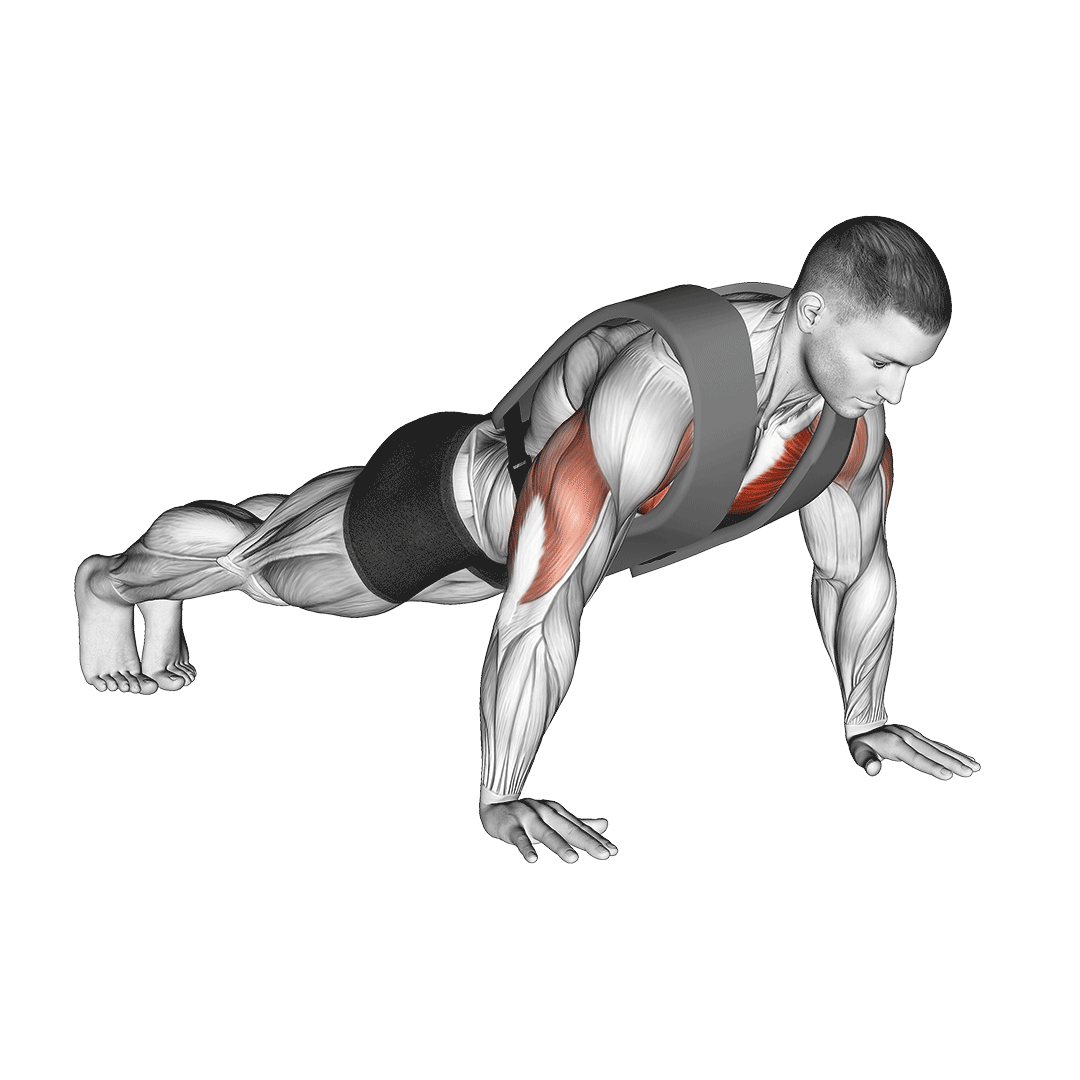A powerful and well-defined back is not only visually striking but also crucial for overall strength and functionality. In this comprehensive guide, we will delve into the transformative world of kettlebell exercises designed to sculpt and strengthen your back. These dynamic movements target various muscle groups, providing benefits beyond aesthetics.
Understanding Back Muscles Anatomy
Before we embark on the journey of kettlebell back exercises, let's explore the intricate anatomy of the back. The major muscle groups include the latissimus dorsi (lats), rhomboids, traps, erector spinae, and more. Balanced development of these muscles is not only aesthetically pleasing but also essential for maintaining proper posture and supporting daily movements.

Latissimus Dorsi (Lats):The lats are large, fan-shaped muscles that drive movements like pulling, helping with shoulder extension, adduction, and medial rotation.
Rhomboids: These are Located between the shoulder blades, rhomboids support scapulae retraction, crucial for maintaining proper posture.
Trapezius:The trapezius is an extensive muscle supporting the upper spine and assisting in various shoulder movements, contributing to shoulder stability.
Erector Spinae:Running along the spine, erector spinae muscles play a crucial role in spinal extension, impacting upright posture.
Terres Major and Minor, Infraspinatus, Supraspinatus:These muscles assist in shoulder movement and stability, contributing to overall shoulder joint health.
Understanding these muscles provides insight into their specific functions, aiding in targeted workouts and overall back health.
Best Kettlebell Exercises for Back Transformation
Kettlebell Row
Benefits
- Targets lats and upper back
- Enhances pulling strength
- Place a kettlebell on the ground beside you.
- Hinge at the hips, grasp the kettlebell with one hand.
- Pull the kettlebell towards your hip while keeping your back straight.
- Lower the kettlebell with control and repeat.
Single-Arm Kettlebell Deadlift
Benefits
- Engages lower back, hamstrings, and glutes
- Improves hip hinge movement
How to do it
- Stand with feet hip-width apart, kettlebell between your feet.
- Hinge at the hips, reach for the kettlebell with one hand.
- Keep your back flat as you lift the kettlebell, extending your hips.
- Lower the kettlebell with control and repeat.
Kettlebell Pull Through
Benefits
- Activates the entire posterior chain
- Enhances hip mobility
- Start in a plank position with a kettlebell beside you.
- Reach through your legs with one hand to grab the kettlebell.
- Pull the kettlebell across to the other side, engaging your core.
- Return to the starting position and repeat.
Renegade Rows
Benefits
- Engages the core and back simultaneously
- Builds stability and coordination
How to do it
- Begin in a plank position with a kettlebell in each hand.
- Row one kettlebell to your hip while balancing on the other.
- Lower the kettlebell with control and switch sides.
- Repeat in a controlled, alternating fashion.
Benefits of Incorporating Kettlebell Exercises
- Kettlebell exercises promote a strong and stable back, reducing the risk of poor posture-related issues.
- The dynamic nature of these exercises engages multiple muscle groups, leading to increased strength and a sculpted appearance.
- A well-trained back contributes to improved performance in daily tasks, from lifting objects to maintaining balance.
How to Incorporate Kettlebell Back Exercises into Your Routine
Designing a Balanced Workout Plan
- Include a variety of exercises to target different angles of the back.
- Incorporate both unilateral and bilateral movements for balanced development.
Tips for Proper Form and Injury Prevention
- Maintain a neutral spine during all exercises.
- Start with a weight that challenges you without compromising form.
- Gradually progress in intensity as your strength improves.
Progressive Overload Strategies for Continuous Growth
- Increase weight incrementally to keep challenging your muscles.
- Vary your rep ranges and include both high and low-repetition workouts.
Kettlebell Workouts plans for Beginner to Experienced level
Below are kettlebell workout plans designed to transform your back for beginners, intermediate, and experienced individuals. Always remember to warm up before starting any workout and consult with a fitness professional or healthcare provider if you have any concerns or health conditions.
Beginner Kettlebell Back Workout
Let’s start with a simple but highly effective kettlebell back workout for beginners.
3 sets of 10 reps
Focus on maintaining a flat back throughout the movement.
3 sets of 12 reps (each arm)
Use a stable surface for support and pull the kettlebell towards your hip.
- Kettlebell Pull Throughs
2 sets of 15 reps
Start in a plank position and pull the kettlebell through your legs, engaging your core.
2 sets of 12 reps
Lie face down, lift your upper body, and squeeze your back muscles.
2 sets of 30 seconds
Hold a kettlebell in each hand and walk briskly, focusing on posture.
Intermediate Kettlebell Back Workout
Once you have mastered the beginners kettlebell back workout you can move onto this more advanced workout.
3 sets of 10 reps (each arm)
Increase the weight gradually, focusing on the hip hinge movement.
3 sets of 15 reps
Engage your hips to swing the kettlebell to shoulder height.
2 sets of 12 reps
Incorporate a leg raise while performing pull-throughs.
3 sets of 12 reps
Hinge at the hips and pull the kettlebell towards your chest.
Advanced Kettlebell Back Workout
The final kettlebell workout is for the more advanced
4 sets of 8 reps
Use heavier kettlebells for increased resistance.
4 sets of 10 reps (each arm)
Perform explosive snatches, focusing on form.
3 sets of 5 reps (each side)
Incorporate a challenging full-body movement.
3 sets of 8 reps (each side)
Focus on controlled lateral movements.
3 sets of 30 seconds
Hold a kettlebell overhead in each hand while walking.
Tips for All Levels
- Increase weights and intensity gradually to avoid overexertion.
- Ensure proper form in each exercise to prevent injuries and maximise effectiveness.
- Pay attention to your body's signals and modify the workout if needed.
- Schedule rest days and incorporate stretching or foam rolling into your routine for recovery.
Always tailor the workout to your fitness level and modify as needed. It's essential to enjoy the process and make adjustments based on your individual progress.
For versatile training options, consider exploring our collection of adjustable kettlebells. With adjustable weights, these kettlebells offer flexibility to tailor your workouts to your desired intensity levels.
Nutrition for Back Muscle Development
- Consume adequate protein to support muscle recovery and growth.
- Include sources like lean meats, fish, eggs, and plant-based proteins.
- Ensure a well-rounded diet with a mix of carbohydrates, fats, vitamins, and minerals.
- Hydrate adequately to support overall health and performance.
Recovery Strategies for a Strong and Healthy Back
Importance of Rest and Sleep for Muscle Recovery
- Aim for 7-9 hours of quality sleep to support overall recovery.
- Allow adequate rest days between intense workouts.
Incorporating Stretching and Foam Rolling
- Include dynamic stretches in your warm-up to improve flexibility.
- Use foam rolling to alleviate muscle tightness and improve range of motion.
Listening to Your Body and Adjusting Intensity Accordingly
- Pay attention to any signs of fatigue or discomfort.
- Modify your workout or take additional rest if needed.
Conclusion
In conclusion , the journey to transform your back with kettlebell exercises is multifaceted and rewarding. The exercises outlined here, when incorporated thoughtfully into your routine, can lead to a stronger, more defined, and healthier back.
Remember to prioritise proper form, stay consistent, and enjoy the process of achieving a back that not only looks impressive but also functions at its best.










